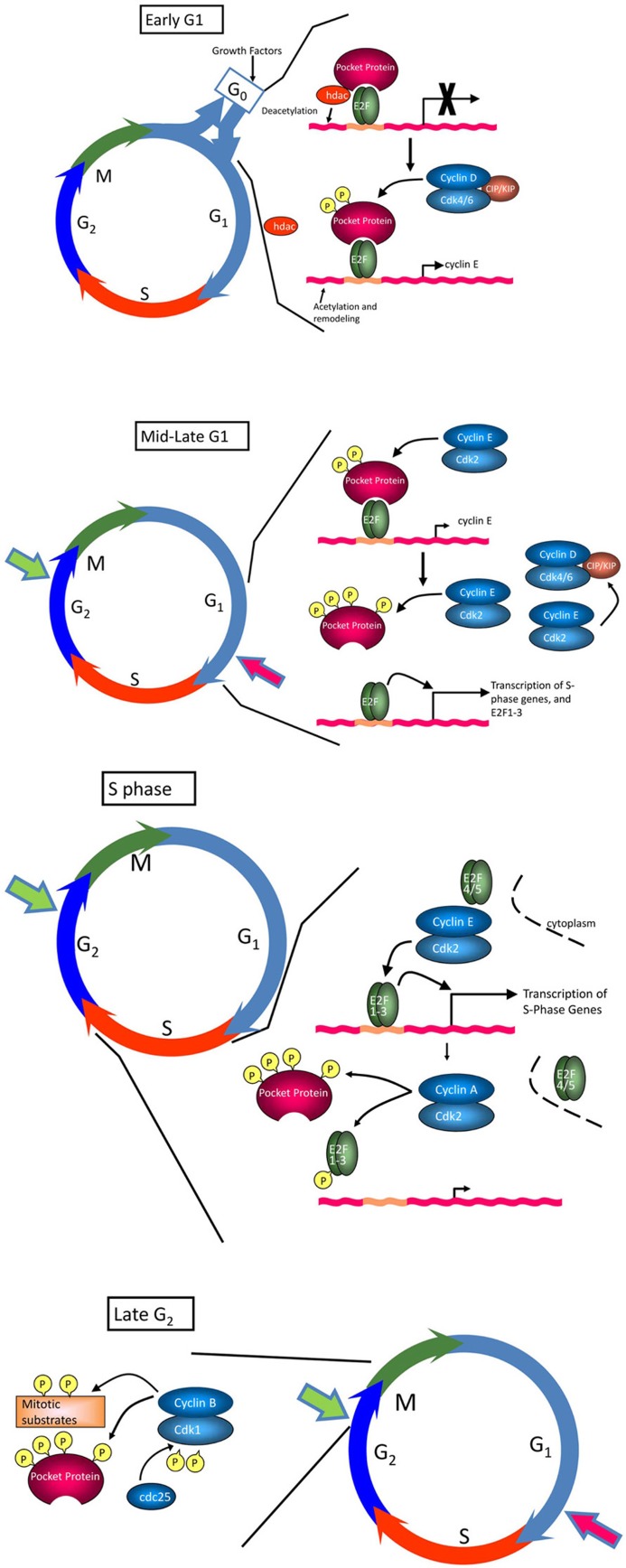FIGURE 1.
The cell cycle. The cell cycle consists of four phases, G1, S, G2, and M. In early G1, hypophosphorylated pRb binds the E2F transcription factor, and recruits histone deacetylase (HDAC) and other factors to actively repress transcription of E2F-regulated genes important for transition into S phase and DNA replication (e.g., PCNA, topoisomerase I, c-Myc, cyclin E, Cdc25c). Progression through early G1 is dependent on growth factors, which promote expression of D-type cyclins. Formation of cyclin D/cdk4 and cyclin D/cdk6 complexes, which is facilitated by Cip/Kip ckis, leads to phosphorylation of pRb at a subset of available sites and release of HDAC and other inhibitory factors, relieving repression of E2F and promoting upregulation of cyclin E. Cyclin E/cdk2 complexes, relieved from repression by Cip/Kip ckis by sequestration of these inhibitory molecules in cyclin D/cdk complexes, complete pocket protein phosphorylation in mid to late G1, enabling a wave of E2F-dependent transcriptional activity essential for S progression. Together, these events drive cells through the restriction point (large red arrow), which commits cells to the proliferative cycle. If conditions are not optimal to signal this transition, cells exit the cycle and enter G0 or quiescence, a reversible non-replicative state. Once cells enter S phase, cyclin E/cdk2 activity is inhibited by proteasomal degradation of cyclin E in the cytoplasm. Continued inactivation/hyperphosphorylation of pRb allows the transcription of cyclin A and cyclin B, required for subsequent phases of the cell cycle. Cyclin A/cdk2 complexes phosphorylate a number of proteins to facilitate S phase completion and transit into G2/M. Cyclin B is actively synthesized during G2 and associates with cdk1 to trigger mitosis. Cdk1 is maintained in an inactive state by the kinases, Wee1 and Myt1. As cells approach M phase, the phosphatase cdc25 is activated to remove inhibitory phosphates on Tyr14 and Thr15, driving the cells into mitosis. A checkpoint in late G2 (large green arrow) prevents cells from entering M phase if the genome is damaged. This DNA damage checkpoint ensures that cells do not initiate mitosis until they have repaired damaged DNA after replication.

